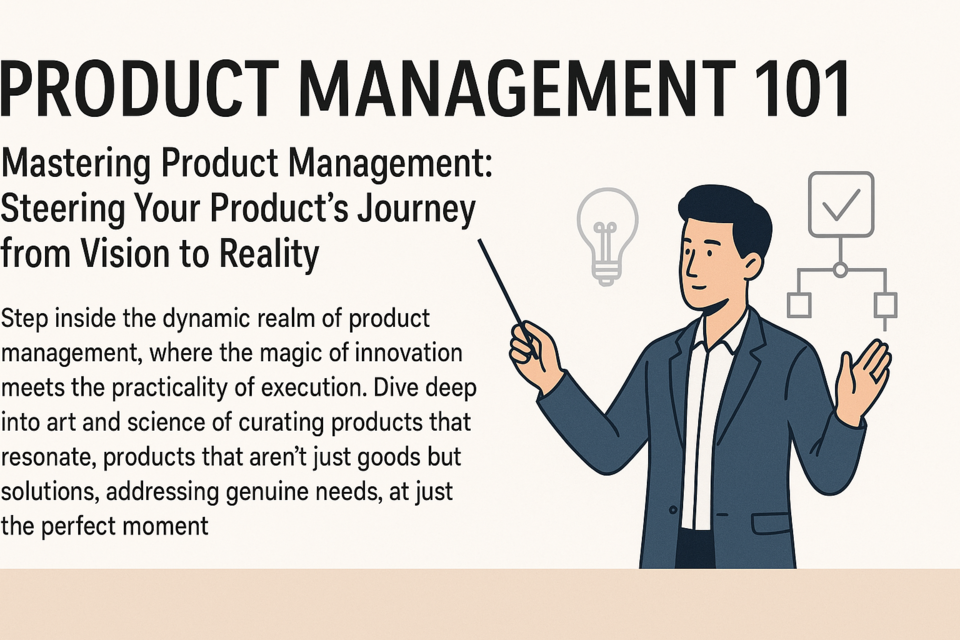Why is it important to know where your organization stands at the moment? Why would you want to know its health? After all, you are organizing a team to put a strategic plan together. This plan is a game changer so why is it important to know how the organization is doing at this very moment? Many leaders are tempted to skip this step because of the faulty logic listed above. Things are about to change so who cares what the organization's health is right now. It's not important. Tell that to Lisa Beels and Christine Naylor, who founded Petite Palate's in 2006.
Their company specialized in gourmet organic baby food that was frozen instead of the common jar and pouch version found on grocery store shelves. The reason for this is the two believed frozen food was closer to fresh and provided the most nutrition. What they did not see were two obstacles that brought about their company's demise in 2010 � a crashing economy and a resistance for change by consumers. Ultimately what they did not know was their company's own health � they ran out of money to endure the time frame needed to educate consumers about the nutritional value of their organic frozen baby food. A strong and honest strategic plan that takes into account their current health status could have prevented their missteps that closed the doors to Petite Palate's.
A Look Within
Exactly what benefits are there for taking your organization's temperature and assessing its health at this very moment? The look will let you know as the leader what your company is doing right, what it's doing wrong, and what it is capable of accomplishing in the future. That's it in a nutshell.
Other benefits will include giving you a usable assessment of what assets are available and their capabilities. Without this knowledge you will not know if your strategic plan is viable or not. Look at Rice Bowl, the operational term used in planning the Iranian hostage rescue during the Carter administration. The look within was fractured at best, even though the team assembled to plan and execute the mission were the best America's military had available. The problem came in the assessment of the equipment that was used and in communication among the various branches concerning the scope of the mission. Hence, priorities were mixed and decisions were faulty about the importance of requests being made to the various military branches for operational support. The only positive outcome from Rice Bowl is it is still used as a case study for Special Forces today on things NOT to do.
By looking at your organization you can identify holes in your assets, abilities, and you will know what you can and cannot do with current assets. This should not be a surface look either because supervisors and managers will hide deficiencies within their departments as self-preservation measures. They are experts at camouflage. You, as the leader assessing your organization's ability to implement a strategic plan that is viable, must use a microscope to look at your internal capabilities. At a minimum:
-
You need to know who does what and how they accomplish what they do.
-
You need to know where their information comes from and is it reliable and up to date.
-
You need to know the efficiency for gathering this information � are the procedures and equipment reliable or are there redundancies in the organization with more than one department doing similar type work?
-
You need to know if the proper information is being used to make decisions � is the right information being delivered to the people who need it the most.
-
You need to know communication capabilities within your organization and if the right messages are being delivered to the right people.
-
Does your organization function as a team or is there competition between individuals and departments that bottlenecks production.
-
You need know the financial state of your organization.
-
You need to look at the culture, morale, and assess your organization's ability and willingness to implement change.
These insights will help you make an informed and accurate decision on whether your organization is capable of implementing needed changes brought out in the strategic plan. It also gives the leader a solid and realistic starting point for each step in the plan's process. Also other information is needed and that comes from your external sources and influence.
A Look Without
Along with the internal investigation, an assessment also is needed for the external components of your organization � your customers, products, and your competition. Before writing the first words of the strategic plan the leader must know:
-
Are the products and or services meeting customer expectations or are they in need of overhaul.
-
Is your marketing effective and targeting the right audience?
-
How do your products and services measure up compared to your competitor's products and services?
-
Is there a void in the products where a niche product or service can easily be developed for an advantage in the market place?
-
Learn how your organization is perceived in the community.
-
What type of presence does your organization have on the internet and is it being monitored and effective.
All this information will let you know what is and what is not achievable when building your plan. This will help you identify steps and procedures that are realistic to achieve success. This will guide decisions for funding the plan. Answering these questions honestly will aid in developing an honest and realistic strategic plan for your organization, ensuring you will reach your future goals.
By answering these questions, you will have the knowledge and data necessary to keep the strategic plan focused on the more important aspect of your organization � why you exist. The answer to this three-word question will ensure the strategic plan will toe the line throughout the process and will guide the organization in a straight line for the next 30 years. A warning is needed at this point � the previous statement is true only if the questions were answered honestly and with candor.
Obtaining the Answers
The questions being asked are not easy to answer and encompass the complete organization, which could be anywhere from five to hundreds of people. Naturally, the larger the organization the more difficult it will be to obtain the needed information. But as you know, it is important that all the information be unbiased and accurate. As mentioned earlier, many managers are great at hiding deficiencies within their department due to their survival instincts. So there are times when digging is required to uncover true and accurate information.
Deadlines need to be set for getting the information or answers could be indefinitely placed on the back burner. Many CEOs today have done away with the formalities surrounding this type of assessment and it has worked well for most. Jack Welch, the former CEO for GE, practically dismantled the company's hierarchy creating an atmosphere of many small companies within the GE complex. This resulted in an atmosphere where employees felt they could reach out and ask questions, state their ideas and opinions, and believed what they said mattered to leadership. And GE flourished because of the change.
So make reporting the answers simple � this will lead to quick responses to the questions. Make it known that honesty is the best policy and there will be no negative repercussions to the answers � only positive outcomes. Let leadership know the reason for the change is to make the organization stronger, better, and more efficient, and that ideas are welcome along with the answers to the questions. This will give a springboard effect to the strategic planning meeting � ideas in place for needed improvements.
And this brings up the question the leader must answer before pursuing the strategic plan � "Do I create an internal consulting team to get all the answers to my questions or do I hire ou+tside consultants?" There are pros and cons for both approaches. The other approach is to utilize department managers to answer each and every question, but beware that these answers could be biased, which could lead to a faulty strategic plan. On the positive side, the various organization's management and leaders do have an honest assessment of the organization's capabilities and will know what is needed to implement the strategic plan. And having them do the assessment and answer the questions creates an ownership to the plan which means they will want to implement it since they were a part its construction.
Internal Consulting Team
So what is the difference between the department managers answering the questions and an internal consulting team? Giving the questions to department managers means they answer the questions during the course of their duties � it's just another thing added on their "To Do" list.
Creating an internal consulting team means you tap individuals from various departments to work on this special assignment, which will continue until the strategic plan is completed. Most companies that utilize internal consultants come from areas such as human resources, marketing, training, quality control, finance, and various middle management positions. The key to utilizing this type of a team is they can assist each other with where to look in the various departments for answers to the questions and how to assess the answers being uncovered. And by members going to departments other than the ones where they work, a fresh set of eyes are being placed on the personnel, processes, and talents available in each department.
Another great advantage to this type of a team is they can play a major role in implementing the plan once it is complete because they were vital in creating it. They have bought into it � they helped create it so they feel as if they own the plan, so they will be enthusiastic about selling it to the organization. That goes a long way towards implementing a positive change in an organization.
There are two other simple factors that need to be addressed about developing an internal consulting team. The first is you are taking people away from their jobs for a period of time. This can create a hardship on production and can create animosity among peers and their superiors. Make sure affected departments are on board with the decision and temporary fixes are in place to handle workloads before implementing the team. This will go a long way towards the acceptance of the strategic plan once it is announced.
The other factor to look at is cost. There could be costs associated with the temporary fixes but on the plus side there is not a cost for bringing in an outside consultant.
Outside Consultant
Outside consultants are specialists. The best description for a consultant is they are individuals who know a lot about a little bit. They are experts on specific fields, industries, or markets. Within their field there are two types of consultants � knowledge experts and what is best described as people consultants. The knowledge expert tends to be the cheapest since they require the least amount of time to complete their job. They give you all the knowledge you need on a specific subject. What you do with their information is up to you.
The consultant you would need to answer your questions so you can proceed with the strategic plan is the people consultant. This type of consultant comes into your work place and works in the various departments, gets to know the people, watches the procedures, asks questions and then creates reports answering all your questions plus adding in other knowledge and suggestions for improvement. Naturally, this takes a lot of time so it can be rather expensive. But what they bring to the table is an expertise to your project and an unbiased viewpoint. You know their answers are candid and without prejudice. And like the internal consultant, this takes time.
How you approach obtaining your answers is up to you. There have been cases where an organization used a combination of internal consultants with outside consultants. This brought the best of both worlds. They worked side-by-side obtaining the answers. The results were an objective, frank report filled with suggestions for improvement. And the employee gained knowledge from an outside source and a source for information when needed. This once again creates a win-win proposition. And because the organization is utilizing some of its own people, the consultant is there a shorter period of time decreasing the cost. Yes, that is a win-win.
























